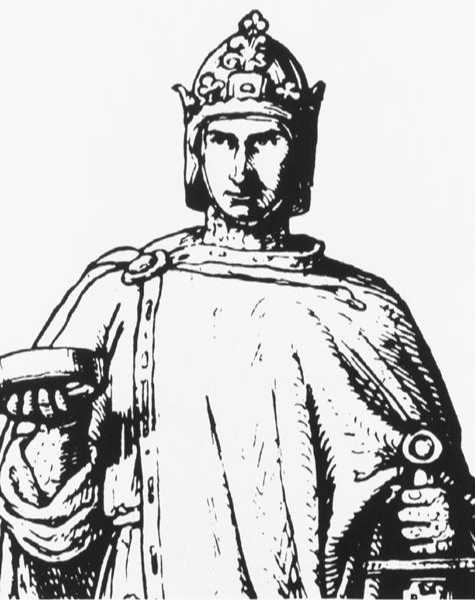Edith died in 946, but Otto would marry a second time. Unlike his father, Otto had dreams larger than Germany

Otto the Great.
Itself, and made it his goal to restore the empire of Charlemagne by conquering Italy. An opportunity presented itself in 950, when a princess named Adelaide, widow of the king of Italy, sent a plea for help. She had been imprisoned by a noble named Berengar (BAYR-un-gur), who had seized the throne, and Otto marched his troops into Italy, rescued the princess, and married her.
In the years immediately following, a number of problems—including a revolt at home, led by one of his sons—prevented Otto from completing his Italian campaign. He also faced an enemy that had long plagued Germany's eastern borders: the Magyars, who would later establish the nation of Hungary. In a battle on August 10, 955, Otto decisively defeated them, in the process earning the title "Otto the Great." Later that year, Adelaide gave birth to a son, who would reign as Otto II from 973 to 983.
In 961, Otto and Adelaide led a sizeable army into Italy, and on February 2, 962, Pope John XII crowned the couple as emperor and empress. Otto would spend most of his remaining years in Italy, fighting to maintain control. In 972, he arranged the marriage of his son to the Byzantine princess Theophano (thee-AHF-uh-noh), a move designed to ensure his family's future imperial status. Later that year, he returned to his beloved Germany, where he died on May 7, 973.




 World History
World History









